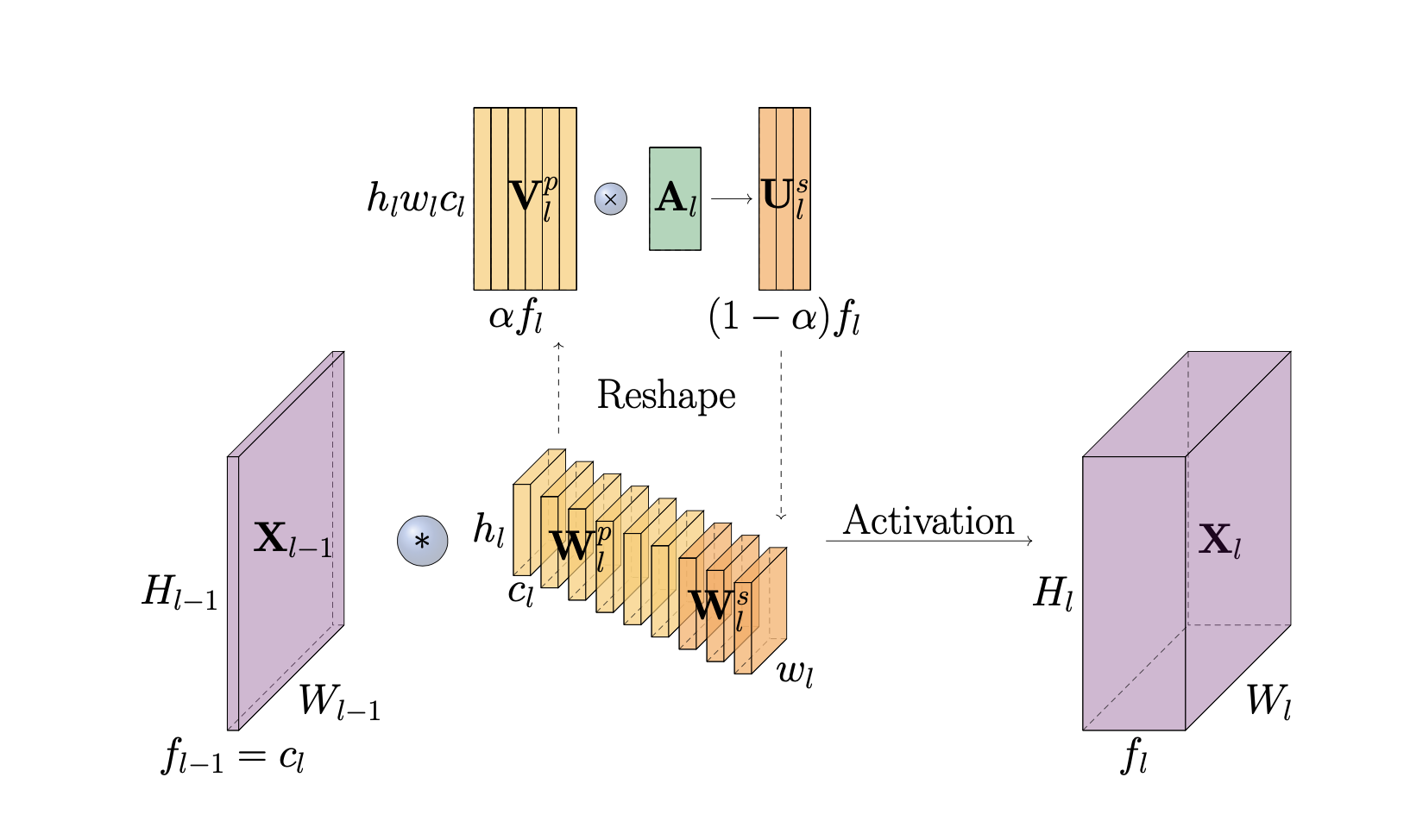Exploiting the Redundancy in Convolutional Filters for Parameter Reduction
Convolutional Neural Networks (CNNs) have achieved state-of-the-art performance in many computer vision tasks over the years. However, this comes at the cost of heavy computation and memory intensive network designs, suggesting potential improvements in efficiency. Convolutional layers of CNNs partly account for such an inefficiency, as they are known to learn redundant features. In this work, we exploit this redundancy, observing it as the correlation between convolutional filters of a layer, and propose an alternative approach to reproduce it efficiently. The proposed 'LinearConv' layer learns a set of orthogonal filters, and a set of coefficients that linearly combines them to introduce a controlled redundancy. We introduce a correlation-based regularization loss to achieve such flexibility over redundancy, and control the number of parameters in turn. This is designed as a plug-and-play layer to conveniently replace a conventional convolutional layer, without any additional changes required in the network architecture or the hyperparameter settings. Our experiments verify that LinearConv models achieve a performance on-par with their counterparts, with almost a 50% reduction in parameters on average, and the same computational requirement and speed at inference.
PDF Abstract

 CIFAR-10
CIFAR-10
 CIFAR-100
CIFAR-100
 MNIST
MNIST
 SVHN
SVHN